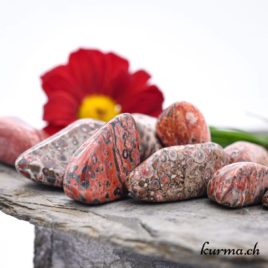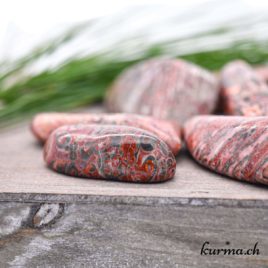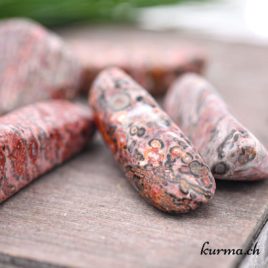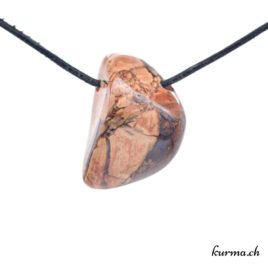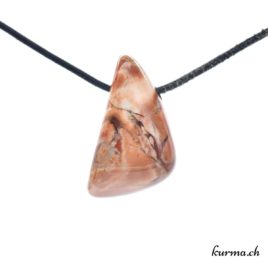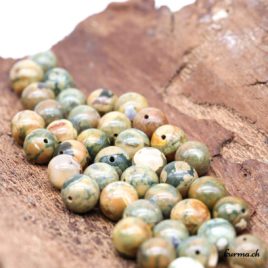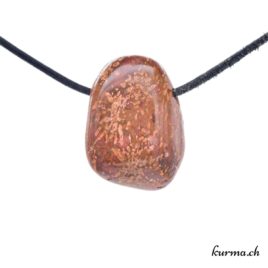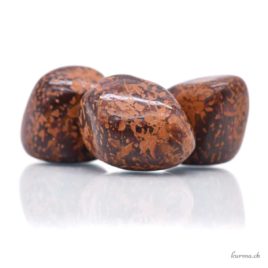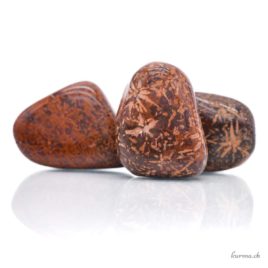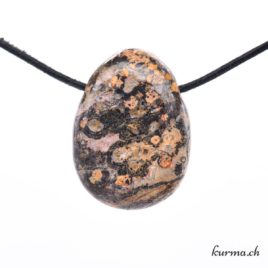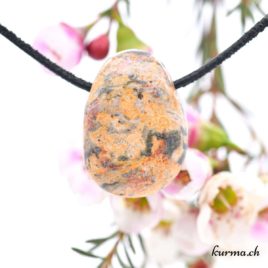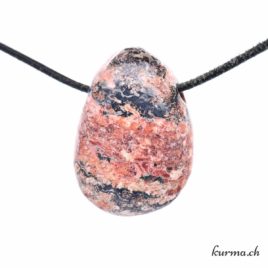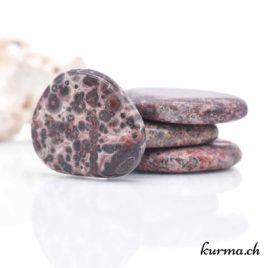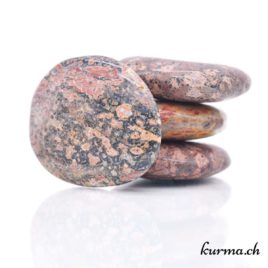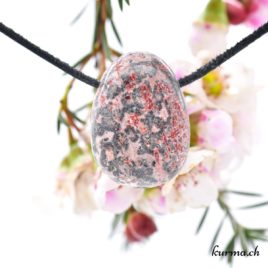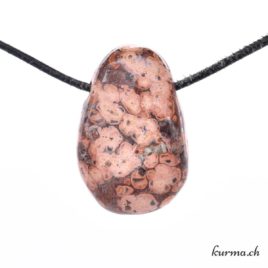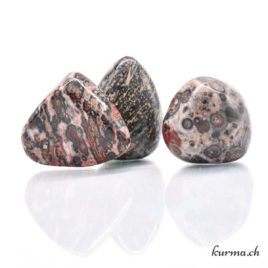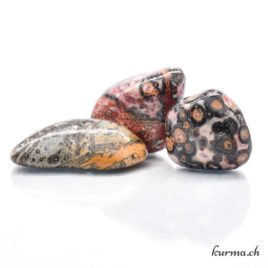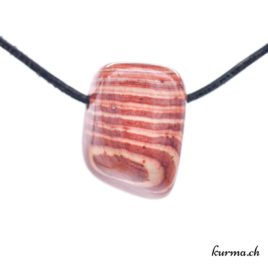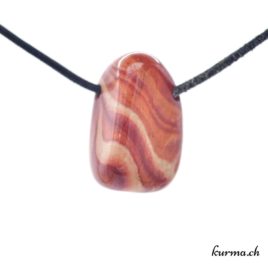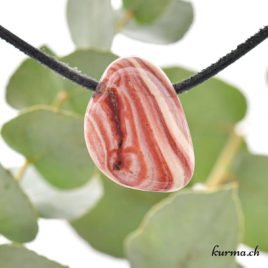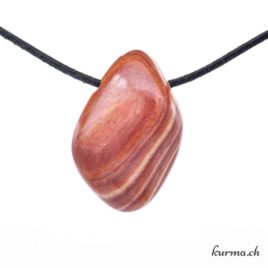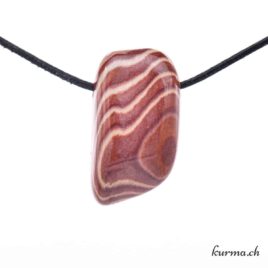Rhyolite
Liesegang gemstones, Leopard Jasper, Cappuccino Jasper, Green Rhyolite or Rainforest Rhyolite
Rhyolite is a stone of acceptance that helps to anchor oneself in the present and to gain confidence in oneself and one's potential.
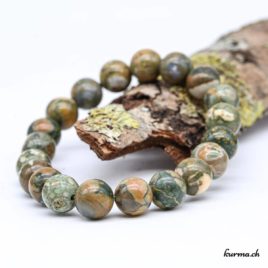

What are the properties and virtues of Rhyolite in lithotherapy?
Its warm energy is that of Mother Earth, symbolized by the stone's swirling patterns, as well as by its earth-toned hues, which are a reminder of the trust we must place in our nature - for our capacity to evolve and grow is very much present.
An ancient myth
Because of its flint-like properties, Rhyolite has been exploited by Native Americans for thousands of years. Tribes such as the Wabanaki of Mount Kineo, or the Susquehannocks of the Mid-Atlantic, used it for tools and weapons, and considered it a stone of transformation and adaptation. It enabled them, in all lucidity, to embrace a situation with all its complexities and thus make the right resolution.
Today, its benefits in lithotherapy
Rhyolite invites you to anchor yourself in the present, to accept things as they are, to accept yourself as you are. With Rhyolite, you gain lucidity and stop making up stories to avoid doing what you should or being yourself. You learn to accept the facts, and understand that constantly projecting yourself into the past prevents you from living in the present.
She invites you to gain full confidence in yourself and your potential, to (re)discover and develop your talents and to blossom with your own resources.
It's also a stone that encourages creativity through its propensity to foster a positive and joyful outlook. By overcoming emotional blocks, it reinforces self-love and invites you to new perspectives. If duality makes up the world, the key lies in balance. One way to find it is in the freedom of creative expression.
Rhyolite can also be used to accompany shamanic practices, such as an encounter with your totem animal.
The physical benefits of Rhyolite
On a physical level, it is renowned in lithotherapy for strengthening the immune system and helping to relieve and heal skin disorders.
Which crystals amplify the beneficial effects of Rhyolite in lithotherapy?
- Combined with Amethyst to open up new perspectives
- with green Aventurine to boost optimism and open eyes to new opportunities
- Citrine for its energizing action and take the right path
- with red jasper to preserve concentration and balance
- combined with Quartz prase for greater creativity, thanks to the amplifying properties of Clear Quartz on the other stones.
Rhyolite purification
Reloading / cleaning
Sun, earth, singing bowl, drum, chime, waveform, prayers, running waterChakras
1st chakra - Root and 4th chakra - Heart for green varietiesAstrological signs
Sagittarius and GeminiElement
Earth - for anchoringRhyolite mineralogy
Rhyolite is formed from granite-rich acid magma. As the magma cools, and depending on its composition, mottled or banded rocks are formed.
It is mainly composed of silicates or hornblende and quartz.
Rhyolite varieties
Green Rhyolite or Rainforest Jasper gets its color from chlorite inclusions and feldspar inclusions.
Rhyolite Liesegang consists of curved bands in various shades of brown, red and beige.
Jasper cappuccino features lined patterns in cream, beige and brown.
Rhyolite or leopard "Jasper" can be predominantly green and beige, or red and pinkish. It features inclusions reminiscent of a leopard's coat.
Star Rhyolite is reddish-brown with ochre-brown star-shaped spots.
It is found mainly in active or extinct volcanic regions: in Germany, China, Chile, the United States, Indonesia, New Zealand, Papua New Guinea, India and Iceland.
Rhyolite has a hardness of 6 to 7 on the Mohs scale - making it highly resistant to abrasion.
Lithotherapy
Mineralogy
- Hardness :
- 5.5-7.0
- Moths scale:
- 5, 6, 7
- Strunz classification :
- Silicate
- Crystalline system :
- Triclinic, Monoclinic
- Line color :
- White, grey, brownish
- Density :
- 2.7-2.9
- Cleavage :
- No
- Fracture:
- Uneven, granular
- Transparency :
- Opaque, translucent in places
Stones with varied and colorful appearances
*Please note! Some minerals may be toxic and must not be licked or ingested (as such or in the form of powder, elixir or stone water) or be in prolonged contact with the skin or mucous membranes.
*The information on the stones described here are general indications based on our research and experience, and are not exhaustive.
Reproduction in whole or in part of this content is prohibited. More info


